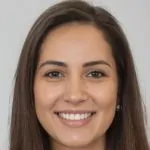New York’s 2025 legislative session is shaping up to be a turning point for oral health access. Assembly Bill A1466 and Senate Bill S3425, the companion pieces of legislation reviving the New York Health Act, have put dental coverage front and center.
By explicitly naming dental care as a core benefit under a single-payer plan called New York Health, and by eliminating cost sharing altogether, the bills propose a dramatic shift from the current patchwork of programs.
If passed, every New York resident and qualifying worker would have access to comprehensive dental services with no premiums, deductibles, or copays.
This universal framework would replace the current landscape of Medicaid, Essential Plan, and stand-alone dental plans with a single, statewide benefit backed by a public trust fund.
Official bill pages:
Table of Contents
ToggleWhat the Bills Actually Say

Both A1466 and S3425 establish a state-administered universal plan called New York Health. The plan would pool federal and state dollars into a New York Health Trust Fund, replacing most existing coverage.
Dental care appears alongside medical, vision, hearing, mental health, prescription drugs, and long-term care in the sponsor memo, which also confirms no network restrictions and the elimination of deductibles and copays.
This is significant because dental coverage has historically been treated as supplemental or optional. By placing it on equal footing with medical care, the New York Health Act signals a recognition of oral health as integral to overall health.
What Counts as Dental Under the New York Health Act
The sponsor memo does not leave dental care in a grey zone. It names dental as a covered category for every enrollee rather than a narrow carve-out for certain ages or income levels. While the bill text doesn’t list every CDT code, it does two crucial things:
- Makes dental care a covered category for every enrollee, regardless of age or income.
- Eliminates patient cost sharing across benefits, a change likely to drive up preventive care and reduce deferred treatment.
The bills also establish a governing board and regional advisory councils plus a cost-control and payment framework.
This unified design would extend to dental providers, replacing today’s split between Medicaid fee-for-service, managed care subcontracts, Essential Plan dental riders, and commercial stand-alone products.
How Dental Coverage Works in New York Today
Before the New York Health Act can be appreciated, it helps to see the current picture.
Dental benefits in New York are spread across Medicaid, the Essential Plan, and private stand-alone policies, each with its own rules and gaps.
Medicaid Adult Dental
New York Medicaid currently covers a broad set of dental services, expanded in 2024 after litigation.
Adults can access medically necessary services such as root canals, crowns, dentures, and periodontics, subject to prior authorization and plan rules.
Even so, adults still face barriers like limited provider acceptance, paperwork hurdles, and regional disparities. New Yorkers looking for Medicaid-friendly dentists in Queens can explore options like vipdentalny.com for preventive and restorative care.
Essential Plan Dental
The Essential Plan is New York’s zero-premium Basic Health Program for adults earning too much for Medicaid but still low income.
In 2024, the state expanded eligibility to 250 percent of the federal poverty level and confirmed that dental and vision are included, often at zero cost sharing.
However, after federal funding cuts in late 2025, the state announced it would scale back the expansion from 250 percent back toward 200 percent FPL. That narrows who qualifies but does not erase dental from the Essential Plan.
Stand-Alone Dental Plans
Outside of public programs, many New Yorkers buy dental coverage separately. These plans vary widely in premium, scope, and provider networks.
Lawmakers have advanced bills like S6254A to increase transparency for dental plans, requiring annual reporting of key data. Transparency is valuable but does not guarantee richer benefits.
Bottom Line
Right now, coverage varies by program and income, cost-sharing can apply, and network acceptance remains a barrier.
The New York Health Act would standardize dental as a statewide, universal benefit with zero out-of-pocket costs.
Why Dental Coverage Matters So Much Right Now

Recent statewide research by the Center for Health Workforce Studies (CHWS) at the University at Albany found that 43 percent of New York respondents reported major barriers to dental care in 2024.
One in six reported affordability problems. Even insured patients struggled to find dentists who accept their plan. Rural regions like the North Country and Southern Tier are in especially high need.
Nationally, 65.5 percent of adults report a dental visit in the past year, but Medicaid-enrolled adults trail that average. New York’s own reporting shows low preventive visit rates among Medicaid adults and children. A universal benefit with zero cost sharing aims to close that gap.
Key Changes Under A1466 and S3425

New York Health’s proposed shift is a full reset of how dental care is delivered and paid for.
A1466 and S3425 outline several major changes that would reshape eligibility, costs, and provider participation all at once.
1. Universal Eligibility With Dental Included
Every New York resident, and full-time workers in New York who live out of state, could enroll.
Everyone gets the same comprehensive package, which includes dental. That removes age and eligibility cliffs that send patients bouncing between programs or plans.
2. No Premiums, Deductibles, or Copays
Out-of-pocket costs are removed entirely. Even small copays can deter preventive cleanings or delay necessary treatment. The sponsor memo puts zero cost sharing on the record.
3. A Single Statewide Payment and Contracting Framework
Instead of dozens of different dental networks and prior authorization rules, New York Health would pay providers directly and set statewide policy.
This could cut administrative churn for dentists and raise acceptance among providers who currently avoid certain plans.
4. Integration With Federal Funding Streams
The bill instructs the state to seek waivers so that federal dollars that now support Medicaid, Medicare, the Essential Plan, and marketplace subsidies can be pooled.
That matters for the financial sustainability of richer dental benefits without cost sharing. Prior analysis from RAND indicates that a New York single-payer plan is feasible under certain financing choices and could increase utilization of services, including oral health.
Side-by-Side: Dental Under Current Programs vs. Proposed New York Health
| Feature | Medicaid Adult Dental | Essential Plan Dental | Stand-alone Dental Plans | Proposed New York Health Dental |
| Eligibility | Income-based | Income-based, currently scaling back from 250 to 200 percent FPL | Anyone who buys a policy | Universal for residents and eligible workers |
| Cost sharing | Generally low, but PA and limits apply | Often zero for preventive, low for other services | Varies by metal tier and insurer | No premiums, deductibles, or copays |
| Network acceptance | Variable by plan and region | Variable by plan and region | Varies widely | Statewide program with unified contracting and payment |
| Scope | Broad set including crowns, root canals, dentures, periodontics, subject to PA | Includes dental and vision as part of the benefit | Preventive covered, major services depend on plan | Dental named as a core benefit for all enrollees |
| Stability | Subject to state budget and federal matching rules | Subject to federal waiver funding and eligibility rules | Commercial market volatility | Backed by a dedicated state trust fund and pooled federal dollars |
Practical Impacts If A1466 and S3425 Become Law

If New York Health becomes reality, it won’t just reshape policy on paper. It will change how people get care, how dentists run their practices, and how communities experience oral health every day.
For Patients
Preventive care would be easier to get because there is no bill at the visit. Expect higher rates of cleanings and exams, which evidence links to lower emergency dental visits.
A universal plan would also eliminate coverage cliffs tied to income, immigration status, or employment changes.
For Dentists and Clinics
Administrative simplification is the big upside: one payer, one rulebook, consistent PA criteria, consistent documentation, and payment cadence.
Payment adequacy will be the key concern. The bills point to alternative payment methodologies beyond fee-for-service.
If rates and incentives are set well, more dentists may participate, especially in rural shortage areas.
For Public Health and Equity
Closing gaps in rural regions and among low-income adults is the largest equity win.
The CHWS studies underline travel time, plan acceptance, and cost barriers that a universal benefit is designed to reduce.
How It Fits With Other Dental Policy Currents in Albany
Even if the New York Health Act takes time to pass, dental policy is moving on multiple fronts:
- Medicaid dental modernization via the 2025 provider manual and earlier litigation outcomes clarifying coverage of implants, crowns, and medically necessary services for adults.
- Transparency and accountability for dental insurers via bills like S6254A, which would require detailed reporting by specialized dental plans.
- Scope and access initiatives that expand where dental hygienists can practice in community settings, which can strengthen preventive reach.
- Essential Plan dynamics after federal cuts. If New York Health passes, its universal structure would shield dental benefits from federal waiver swings by folding them into a state program and trust fund.
The York Health Act projected higher use of services broadly, with overall Financing Questions and Dental Utilization
Any universal plan that removes cost-sharing will raise utilization. RAND’s simulation for the Neaffordability depending on how the state sets payroll assessments and provider payment rates.
While that report is from 2018 and needs updating for today’s prices, it remains the most cited independent modeling of a New York single-payer approach.
For dental, expect more preventive care and earlier restorative treatment, with system savings tied to avoided emergency dental visits and complicated extractions.
What to Watch Next
Committee movement on S3425 and A1466 during the 2025-2026 session, especially hearings that take testimony from dental associations, safety-net clinics, and public health researchers. Official bill pages list actions and co-sponsors.
Rate-setting and payment design drafts. The promise of simpler administration only translates into real-world access if dental payment levels draw more providers into the program.
Interaction with Essential Plan changes through 2026. If the state narrows eligibility due to federal funding cuts, pressure will grow to lock in statewide dental access through a universal framework.
Practical Takeaways for New Yorkers Who Care About Dental Access

If you are currently on Medicaid or the Essential Plan, you already have dental coverage, but provider acceptance and cost-sharing terms vary. Check your plan materials and the state’s dental comparison tool when you shop for stand-alone coverage.
If A1466 and S3425 pass, dental becomes a universal, no-cost benefit. You would not need a separate dental plan. The same coverage would follow you regardless of job or income swings.
For dentists, keep an eye on rate proposals and administrative rules that come out of the board and the Commissioner’s office if the act advances. A simpler single payer could reduce billing overhead and write-offs, but practice economics will hinge on payment levels and timely adjudication.
Final Word
Assembly Bill A1466 and Senate Bill S3425 represent more than a policy tweak. They are a bold step toward making dental care a universal right in New York.
By embedding dental into the core of New York Health, eliminating cost sharing, and creating a single statewide framework, the bills directly target the gaps that have left so many without care.
The details still need to be hammered out, but the direction is clear: a future where every New Yorker can walk into a dentist’s office without worrying about the bill.
Related Posts:
- 26 Most Dangerous Cities in US - Updated Statistics for 2025
- Legislative Tracker: Pro-LGBTQ Nondiscrimination Legislation
- Safest Countries in the World in 2025 - GPI…
- What You Need To Know About the Equality Act in 2025
- America's Murder Capitals: A 2025 Ranking of the…
- Capital Cities in Europe: Top Destinations For You…








